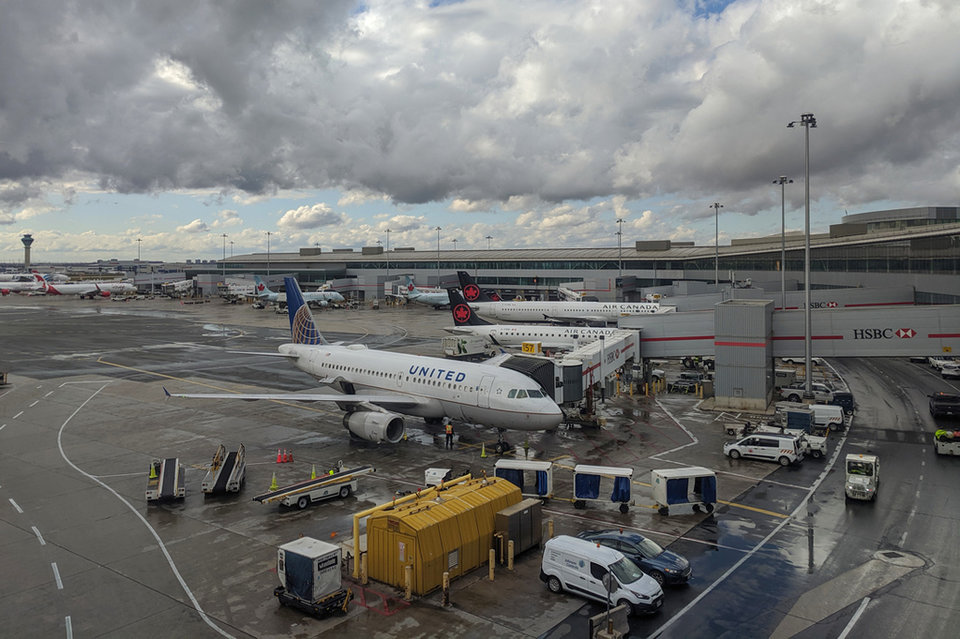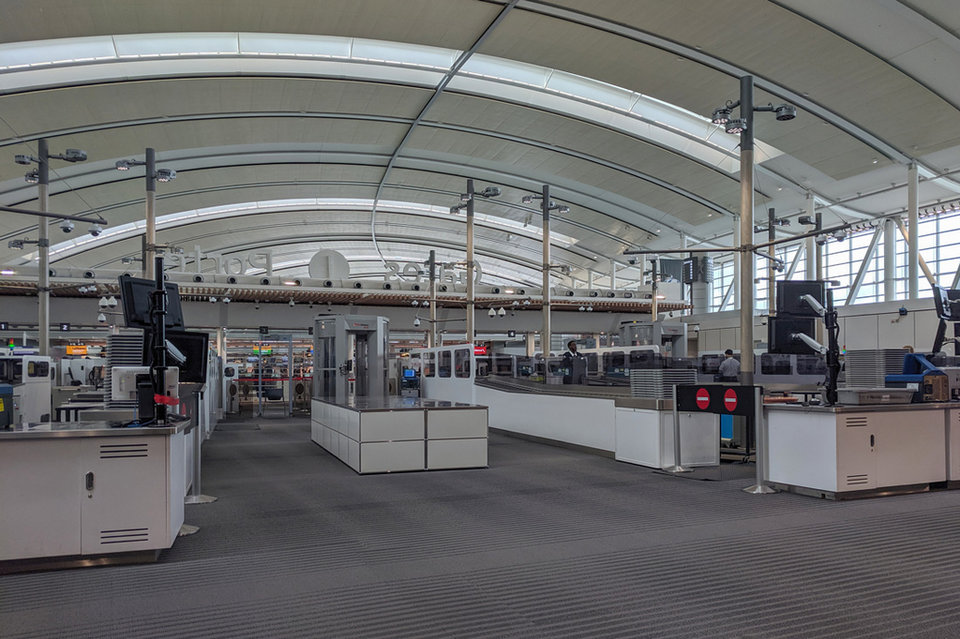Security
Is it right to use artificial intelligence in aviation security?
HEXWAVE, a new security imaging system supported by artificial intelligence (AI), will soon be tested in aviation. The Greater Toronto Airports Authority plans to conduct a week-long trial at Pearson International Airport. The Authority’s Dwayne MacIntosh tells Andrew Tunnicliffe why he hopes the trial will be a success and why AI shouldn’t be feared.
“Humans, who are limited by slow biological evolution, couldn't compete and would be superseded.” On the face of it, a chilling statement made by the late Stephen Hawking. The world-renowned theoretical physicist was speaking of his fears of an unleashed artificial intelligence (AI). “The development of full artificial intelligence could spell the end of the human race,” he said, adding, “it would take off on its own, and re-design itself at an ever-increasing rate."
The role AI will play in tomorrow’s world has long been debated, with supporters and sceptics often happy to promote the merits of their argument, whilst – almost all the time – questioning that of the other side. “Some people call this artificial intelligence, but the reality is this technology will enhance us. So instead of artificial intelligence, I think we'll augment our intelligence,” counters IBM CEO Ginni Rometty.
For now, what is almost irrefutable is the impact AI has on our everyday life. In many cases, however, we often don’t know it’s there, working in the background to make daily routines that little bit easier, and even safer. They are the hopes of the Greater Toronto Airports Authority (GTAA) which recently announced it would be testing HEXWAVE, an AI-enhanced weapon detection technology.
Image:
AI to be trialled at Pearson International Airport
Pearson International Airport will be one of the test sites for Liberty Defense’s system, which uses 3D radar imaging to detect and identify weapons. The intention, in aviation at least, is to use the system at a facility’s perimeter with the hope of identifying threats before they reach the terminal.
Keen to stress the purpose is not to replace security measures, the company’s CEO Bill Riker said it would further enhance already employed security systems. As well as its trial at the airport, HEXWAVE will be tested at other venues, such as sports stadiums, shopping centres, education facilities and government sites across North America and Europe.
“It is a product that detects metal and non-metal objects, and alerts responders through the use of AI technology,” says GTAA director of corporate safety and security Dwayne MacIntosh. He said the authority is looking at testing it at multiple locations to “determine how we can best operationalise such a product in the future” during the week-long project, although no date has yet been set.
HEXWAVE’s 3D imaging capabilities mean it can identify even the smallest of weapons – including concealed handguns and knives – as well as the likes of bombs and suicide vests with what the company says is a low-energy radar. This scans the outline of the body to reveal any abnormal contours, as well as detecting prohibited items in baggage. While the use of technology like this in this realm isn’t new, it is the speed with which HEXWAVE carries out the operation that stands out. Rather than a subject needing to stand still, it can carry out its role on moving targets.

Image: Elena Berd / Shutterstock.com
The AI component means the system itself assesses and determines whether an individual poses a threat. “The AI technology looks for prohibited items and alerts airport responders, who then work to mitigate the incident,” says MacIntosh. It can be used both inside and out and is scalable to any setting, helping manage throughput screening in real-time.
He is a firm believer in the advantages AI can offer sites such as airports. He says it facilitates the tracking and identification of threats, integrated into wider airport systems in such a way that it makes response seamless. “Using AI to speed the process of identifying, tracking and dispatching resources allows for faster responses and better threat mitigation, thereby protecting passengers and the airport community,” he continues.
However, critics may question whether this might infringe on individuals’ rights and even privacy. It’s a concern MacIntosh wants to dispel, saying the system will simply not collect anyone’s data. “Privacy is as important to us as safety, and we will always take measures to preserve both for passengers and the airport community,” he adds.
Eero Knuutila is Head of Service Development at Helsinki Airport.
Image courtesy: Helsinki Airport
The AI technology looks for prohibited items and alerts airport responders, who then work to mitigate the incident
What are the benefits of AI in aviation security?
But are systems of this kind necessary? Since the terror attacks on New York and Washington in September 2001, airport security has changed dramatically. In the last few years, AI technologies have been rolled out, with demand continuing to grow as the sector looks to strengthen itself against evolving threats. They have become increasingly crucial in that battle to stay ahead; indeed in the security sphere, they are becoming integral to the work of personnel.
Security scanners boasting AI technologies are fast becoming commonplace. Body scanning similar to HEXWAVE is already being used by some airports; facial recognition and other biotechnologies are now complimenting these systems and assisting the increased physical security presence since 9/11. “Although there are new issues such as drones, many of the same concerns that we face today existed a decade ago,” says MacIntosh. “The difference is that the tools we use to mitigate those issues have continued to advance, giving us greater ability to protect passengers and the airport community.”

Image: Elena Berd / Shutterstock.com
He says GTAA works closely with technology developers to identify opportunities to advance new methods, address gaps and fine-tune tools that protect passengers and the airport community. However, airports continue to face many challenges he warns.
Speaking of the trial at Pearson, he says: “Pearson is protected by an integrated security network that includes multiple government agencies that cooperate to apply special processes and technologies that protect national security, as well as passengers and the airport community.” With the site being what he called a “complicated environment” he believes it is important to work with technology companies to see how the GTAA can help advance technologies that will benefit employees and passengers, especially with regard to ensuring their safety and security.
Although there are new issues such as drones, many of the same concerns that we face today existed a decade ago
Bringing another layer of intelligence
One of the huge potentials of AI is its ability to learn. The more data systems are fed, the better they are at the role they are commissioned to do. Capitalising on that ability, Liberty Defense will train HEXWAVE’s artificial neural networks (ANNs) at its Atlanta engineering centre. ANNs learn in the same way humans do, meaning with every task they take on their ability to do so improves.
Excited by what HEXWAVE product might offer, MacIntosh says the collaboration will help inform the development of new products and tools to meet airports’ needs, opening the door to other technologies in coming months. “The team at Pearson is always looking to identify opportunities to advance new methods and tools to increase the safety and security of passengers and the airport community,” he says. “There will be new technology over the next year, but no final decisions have been made about next steps.”
Although the announcement that AI is to be used by GTAA may have caused some to question how far AI should go, the reality is it’s been around for some time now. Like any other environment, if AI has the potential to speed up a process without lowering accuracy, surely it is reasonable to at least assess its impact.
Computer scientist Yann LeCun once said: “Our intelligence is what makes us human, and AI is an extension of that quality.” Arguably, the aviation sector is getting to a point where it will see if he, or any other voice on the subject, is right.
There will be new technology over the next year, but no final decisions have been made about next steps